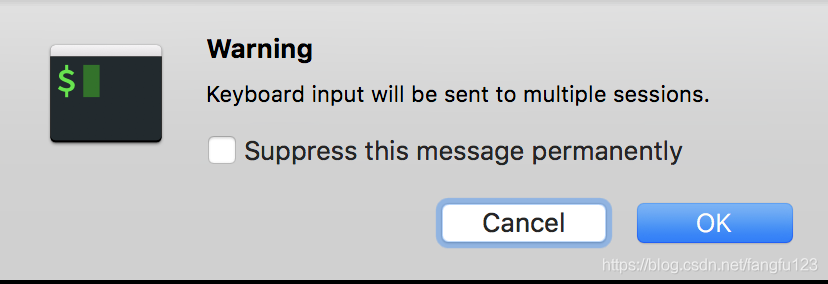free是用来查看当前系统的内存使用情况的。
在解释之前,先要熟悉几个概念。
共享链接库:它的意思是一些共享的库文件,不需要每个进程都加载到内存中,每个进程可以共享它们。从而达到节省内存的目的。比如libc.
然后是Cache Pages和Buffer,以下是从Redhat的网站上抓出来的。
这里需要注意一点的是:它们的系统来使用的,在新版本的free中是used列中,是没有计算出来的,原因就是在系统的可用内存没有的时候,OS会释放一些Cached或Buffered的内存,给应用程序。
Linux always tries to use RAM to speed up disk operations by using
available memory for buffers (file system metadata) and cache (pages
with actual contents of files or block devices). This helps the system
to run faster because disk information is already in memory which
saves I/O operations. If space is needed by programs or applications
like Oracle, then Linux will free up the buffers and cache to yield
memory for the applications. If your system runs for a while you will
usually see a small number under the field “free” on the first line.
–
Cache Pages:
A cache is the part of the memory which transparently stores data so
that future requests for that data can be served faster. This memory
is utilized by the kernel to cache disk data and improve i/o
performance.
The Linux kernel is built in such a way that it will use as much RAM
as it can to cache information from your local and remote filesystems
and disks. As the time passes over various reads and writes are
performed on the system, kernel tries to keep data stored in the
memory for the various processes which are running on the system or
the data that of relevant processes which would be used in the near
future. The cache is not reclaimed at the time when process get
stop/exit, however when the other processes requires more memory then
the free available memory, kernel will run heuristics to reclaim the
memory by storing the cache data and allocating that memory to new
process.
When any kind of file/data is requested then the kernel will look for
a copy of the part of the file the user is acting on, and, if no such
copy exists, it will allocate one new page of cache memory and fill it
with the appropriate contents read out from the disk.
The data that is stored within a cache might be values that have been
computed earlier or duplicates of original values that are stored
elsewhere in the disk. When some data is requested, the cache is first
checked to see whether it contains that data. The data can be
retrieved more quickly from the cache than from its source origin.
SysV shared memory segments are also accounted as a cache, though they
do not represent any data on the disks. One can check the size of the
shared memory segments using ipcs -m command and checking the bytes
column.
Buffers :
Buffers are the disk block representation of the data that is stored
under the page caches. Buffers contains the metadata of the files/data
which resides under the page cache. Example: When there is a request
of any data which is present in the page cache, first the kernel
checks the data in the buffers which contain the metadata which points
to the actual files/data contained in the page caches. Once from the
metadata the actual block address of the file is known, it is picked
up by the kernel for processing.
我们来看看free的输出:
- total used free shared buff/cache available
Mem: 65697148 28995804 15909532 1587368 20791812 32578364
total : 表示系统的总内存
used : 表示应用程序已经使用的内存
free : 表示当前还没有被使用的内存
shared :表示共享链接库使用的内存
buff/cache : 表示系统的page cache和buffer使用到的内存
available : 表示应用程序还可以申请到的内存
系统当前使用到的内存是:used + buff/cache,used中包含了shared。
所以total = used + buff/cache + free = 28995804 +20791812 + 15909532 = 65697148。
available(32578364) <= free + buff/cache(15909532 + 20791812 = 36701344),为什么是小于呢?因为系统的一些page或cache是不能回收的。
As of the new available field, for Linux kernels older than 2.6.27,
its value is the same as the free value, but for the later versions of
the Kernel, its a bit different:
Estimation of how much memory is available for starting new
applications, without swapping. Unlike the data provided by the cache
or free fields, this field takes into account page cache and also
that not all reclaimable memory slabs will be reclaimed due to items
being in use (MemAvailable in /proc/meminfo, available on
kernels 3.14, emulated on kernels 2.6.27+, otherwise the same as
free)
refs:
https://askubuntu.com/questions/770108/what-do-the-changes-in-free-output-from-14-04-to-16-04-mean
https://access.redhat.com/documentation/en-US/Red_Hat_Enterprise_Linux/5/html/Tuning_and_Optimizing_Red_Hat_Enterprise_Linux_for_Oracle_9i_and_10g_Databases/chap-Oracle_9i_and_10g_Tuning_Guide-Memory_Usage_and_Page_Cache.html
————————————————
版权声明:本文为CSDN博主「lantianjialiang」的原创文章,遵循CC 4.0 BY-SA版权协议,转载请附上原文出处链接及本声明。
原文链接:https://blog.csdn.net/lantianjialiang/article/details/78527295
转载请注明:学时网 » 新版的Linux中的free命令的输出解释



